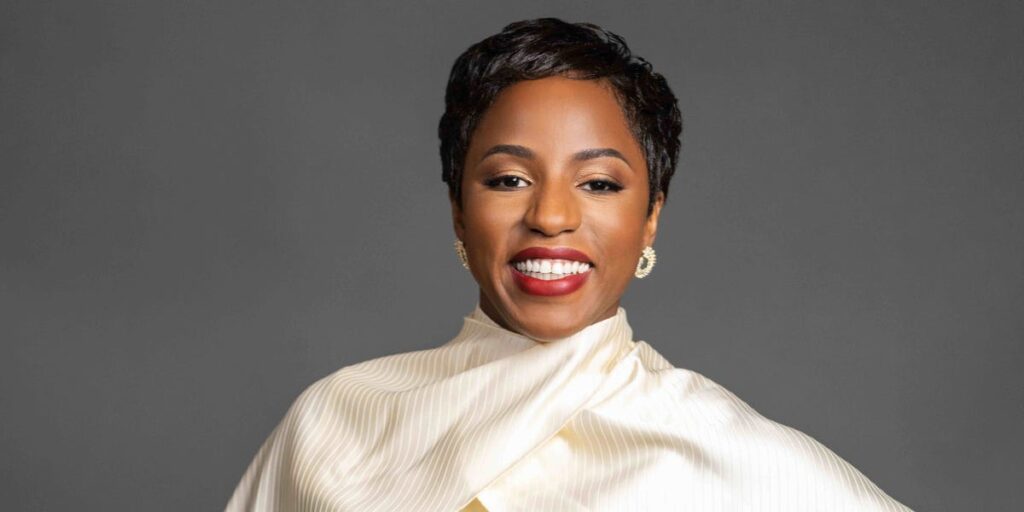This as-told-to essay is based on a conversation with Bola Sokunbi, a certified financial education instructor, author of the soon-to-be-released “Clever Girl Millionaire,” and founder of Clever Girl Finance based in New Jersey. The following has been edited for length and clarity.
I graduated from college in 2004 and saved $100,000 in three years on a $54,000 salary. Then, in 2007, the recession happened.
A lot of people stopped investing, but I had been reading “Smart Women Finish Rich,” one of my favorite personal finance books at the time. I remember the guidance: The stock market is on sale. Buy what you can and just ride it out. I thought, “I’m young. I don’t need this money anytime soon.” So despite the panic, I’m going to save and invest.
I was fortunate enough to avoid getting laid off from my consulting job, and I was side-hustling my life away with my photography business.
Off the heels of saving that first $100,000 and starting my company, Clever Girl Finance, I’ve been building an over $1 million portfolio for the past eight years. Making this happen — even in tough economic times — isn’t as difficult as you’d think. Three tactics have helped me invest and build.
Build up a cash buffer
You always need to have a cash buffer, meaning you have money set aside to cover your expenses — kids, food, housing, mortgage, unexpected home repairs, that kind of stuff — without having to cash out investments.
When I transitioned out of my full-time job to build Clever Girl Finance in 2017, I set an intention to save 18 months of my salary beforehand. Even if my business didn’t make any money or I needed to go back to work, I still wanted to have enough of a buffer.
I always tell people to open a separate bank account that they don’t have easy access to. If they’re employed, they should build an automated transfer from their payroll into this account
Get a side hustle
It’s also really important, even if you’re working full time, to have other sources of income. People will say to me, “Well, I’m not business-inclined.” Well, you can get creative.
I have twins, and one way that I brought in extra money towards their savings was to sell stuff as they grew through every stage of their lives. They outgrew their strollers, so I sold their strollers. They outgrew their cribs, so I sold those too.
There’s no shame in a part-time job or side hustle. I worked full-time, running Clever Girl Finance, and at the same time ran my photography business, which I operated from 2008 to 2015. I would charge more or less $4,000 for one wedding.
I also had a little bridal retail shop. Even today, I have Clever Girl Finance, but I also take on speaking opportunities and write books. I’m doing all these other side hustles as part of my business, as a way to diversify my income stream.
Invest with diversification in mind
I’m a huge John Bogle fan. He was the founder of The Vanguard Group, and he popularized something called the three-fund portfolio, which is essentially where you put your money in three categories, at a minimum, which are US stocks, US bonds, and then international stocks. So a three-fund portfolio of index funds or ETFs.
When your money is categorized this way, you’re pretty much investing across categories, like pharmaceutical, healthcare, technology, automobile, consumer staples, etc. — you have a super broad diversification. This reduces risk and it helps me weather crazy storms. If pharmaceuticals were down, then the rest of my portfolio could be an anchor.
I also invest in some individual stocks, typically for brands I’m vested in because I use the products, and beyond the stock market — some angel and real estate investing.
I wanted to help change the narrative
I didn’t imagine that I’d ever write a book or turn my finance journey into a full-time business. I wanted to help change the narrative that I was hearing about women, especially Black women, not caring about their finances, so I created Clever Girl Finance.
There’s always going to be crazy and calm moments. Look at historical occurrences. Look at how investments have behaved over time. If you have your cash buffer, side hustle, and invest with diversification, then you have less of that stress about what’s happening to your investments. Just set it and forget it.
If you need the money, you shouldn’t invest it. If you don’t have emergency savings or if you need job stability, then focus on prioritizing those two first and maybe take advantage of an employer investment plan before you start ramping up investing.
There’s a lot of panic with what people are seeing economically and politically. If you’re feeling overwhelmed, focus on building a positive mindset, reading, and staying educated. Don’t get caught up in the hype.
If you work in finance and would like to share relevant investment tips, please email the editor, Manseen Logan, at mlogan@businessinsider.com.
Read the full article here


